India’s challenge in 2025 is not about choosing between the Global South and the United States. It is about managing contradictions and maximizing influence without abandoning its principles.
India is currently navigating a complex strategic landscape as it balances its role as a leader of the Global South with the challenges posed by President Donald Trump’s second term. Trump’s second presidency has already disrupted multilateral forums, weakened climate cooperation, and destabilized the rules-based order — developments that disproportionately affect Global South countries.
Since 2023, India has consistently positioned itself as a global leader of the developing world. This culminated in its ambitious G20 Presidency in 2023, where Prime Minister Modi championed the slogan “One Earth, One Family, One Future,” highlighting India’s commitment to inclusive development and a multipolar world. India has also hosted the Voice of Global South Summit, extended development partnerships to African nations, and spoken up for debt relief and technology access in multilateral forums.
However, Donald Trump’s second presidential term, which began in early 2025, has posed significant challenges to this agenda. His administration has withdrawn from climate finance commitments, undermined the World Trade Organization, and imposed punitive tariffs that have ripple effects across emerging economies. While India has sought to maintain cordial relations with the U.S., it now finds itself caught in a geopolitical balancing act: Should it stand firm with the Global South or hedge closer to Washington’s shifting priorities?
This dilemma is not just diplomatic — it affects India’s long-term vision of becoming a Vishwaguru (world teacher) and building a fairer international order.
Historical Perspective: India and the Global South
India’s association with the Global South has deep roots. It was a founding member of the Non-Aligned Movement (NAM) and a vocal advocate for decolonization and development justice in the post-WWII period. The Bandung Conference (1955) and the formation of the G77 bloc were pivotal moments where India stood in solidarity with newly independent countries. Over the decades, India championed South-South cooperation and offered technical assistance through institutions like the Indian Technical and Economic Cooperation (ITEC) program.
India-U.S. Relations: From Hesitation to Convergence
Historically, Indo-U.S. relations have been marked by periods of mistrust, especially during the Cold War when India was closer to the USSR. The relationship warmed after the 2005 civil nuclear deal, culminating in a “Comprehensive Global Strategic Partnership” under the Trump-Modi era (2016–2020). This relationship emphasized defense cooperation (e.g., COMCASA, BECA), trade negotiations, and strategic convergence on China.
However, Trump’s first term also featured erratic trade decisions, visa uncertainties, and unpredictable rhetoric. His “America First” agenda often clashed with India’s multilateral preferences.
Analysis
A. Trade and Tariffs: Undermining the Rules-Based Order
The WTO-led multilateral trading system is critical for developing countries like India, which lack the economic heft of developed nations. Trump 2.0 has continued to impose tariffs on key goods, undermining WTO dispute mechanisms. His administration has blocked appointments to the WTO Appellate Body and discouraged multilateral trade negotiations.
For India, this is a two-fold concern:
- Direct impact: Indian exports, especially in textiles, pharmaceuticals, and IT services, face uncertainties due to arbitrary U.S. tariffs.
- Indirect impact: The breakdown of the rules-based order leaves Global South countries vulnerable to economic coercion by powerful states.
India must therefore navigate a path that protects its trade interests with the U.S. while defending the integrity of global trade institutions.
B. Climate Diplomacy: Disruption and Dissonance
One of the most consequential reversals under Trump 2.0 has been the withdrawal from climate finance commitments under the Paris Agreement. Trump has labeled climate action as “economically suicidal” and halted U.S. contributions to the Green Climate Fund. This disproportionately affects the Global South, which relies on such funding for mitigation and adaptation.
India has positioned itself as a responsible climate leader, setting ambitious renewable energy targets and launching the International Solar Alliance (ISA). However, aligning with a climate-skeptic U.S. administration could damage India’s green credibility and fracture its solidarity with vulnerable nations in Africa and the Pacific.
C. Geopolitical Balancing: The China Factor
Perhaps the most strategic element of this tightrope is the geopolitical competition with China. If India retreats from Global South leadership, it creates a vacuum that China is eager to fill. Already, China’s Belt and Road Initiative (BRI), increased lending via the AIIB, and rhetorical support for South-South solidarity have strengthened its presence across Africa, Southeast Asia, and Latin America.
India’s leadership in forums like BRICS, IORA, and the G20 offers a normative counterweight to Chinese economic dominance. However, closer U.S. alignment under Trump — especially in anti-China military groupings like the Quad — may restrict India’s space for independent diplomacy.
Foreign Policy Recommendations
1. Reaffirm Commitment to Multilateralism
India must continue advocating for a reformed but robust multilateral order. It should actively support the revival of the WTO’s dispute resolution mechanism and work with like-minded countries in the Global South to prevent a full collapse of trade rules. Simultaneously, India should remain engaged in plurilateral initiatives that balance flexibility with fairness.
2. Pursue Issue-Based Alignment with the U.S.
Instead of ideological alignment with Trump’s worldview, India should adopt an issue-based partnership model. For example:
- Cooperate on Indo-Pacific maritime security and counter-terrorism.
- Firmly disagree on climate rollback and trade protectionism.
- Maintain strategic autonomy in multilateral forums like the UN and G77.
3. Strengthen South-South Cooperation
India should double down on its development partnerships across Africa, Latin America, and Southeast Asia. Initiatives like ITEC, lines of credit, and digital public infrastructure exports (e.g., UPI, Aadhaar stack) must be scaled up. Hosting a second Voice of Global South Summit or launching a South-South Digital Alliance could reaffirm India’s leadership credentials.
4. Build Alternative Coalitions
India should collaborate with the EU, Japan, and ASEAN to create alternative coalitions that support climate action, trade cooperation, and rules-based governance. These groupings can help balance an unpredictable U.S. and prevent dependence on either China or Trump’s America.
5. Use Strategic Messaging
India must clearly articulate that its Global South leadership is not anti-West but pro-justice and pro-development. Strategic communication — including soft power tools like media, diaspora outreach, and think tank diplomacy — will be key in shaping perceptions and narratives.
Conclusion
India’s challenge in 2025 is not about choosing between the Global South and the United States. It is about managing contradictions and maximizing influence without abandoning its principles. The path ahead requires diplomacy rooted in realism, but not devoid of ideals. If navigated carefully, India can emerge not just as a bridge between the North and South, but as an architect of a more balanced world order.
Sonika Choudhary is an intern at TheRise.co.in
References:
- Chatham House. (2025, March). Southeast Asia: Trump reinforces worst fears about US. chathamhouse.org
- Ministry of External Affairs, India. (n.d.). India’s Foreign Policy. Retrieved from India’s Foreign Policy
- National Portal of India. (n.d.). Foreign Affairs. Retrieved from Foreign Affairs – National Portal of India
- Firstpost. (2025). India maintains a fine balance in the Global North-South equation
- Ghosh, A. (2025). Trump’s tariffs as a risk for the Global South and possible options. German Institute of Development and Sustainability. https://www.idos-research.de
- Guardian. (2025, April 6). Trump’s tariffs may be perilous for small Global South economies. https://www.theguardian.com/business/2025/apr/06/trumps-tariffs
- Joshi, R. (2025, April). India-US-Trump-Modi-Tariffs: First 100 Days. Carnegie Endowment for International Peace. https://carnegieendowment.org/emissary/2025/04
- SCMP. (2025). Global South can count on China as old world order crumbles. https://www.scmp.com
- ORF. (2025). What Trump 2.0 means for development partnerships and the Global South. https://www.orfonline.org/expert-speak
- Foreign Policy. (2025, April 9). Trump tariffs and Africa’s trade pivot to China. https://foreignpolicy.com/2025/04/09
- DevelopmentResearch.eu. (2025). Trump’s executive orders and the Global South. https://www.developmentresearch.eu
- Acharya, S., & Smout, A. (2025, May 6). Britain and India clinch major trade deals in ‘new era’ of Trump tariffs. Reuters. https://www.reuters.com/world/india/india-uk-conclude-talks-over-free-trade-pact-pm-modi-says-2025-05-06/Reuters

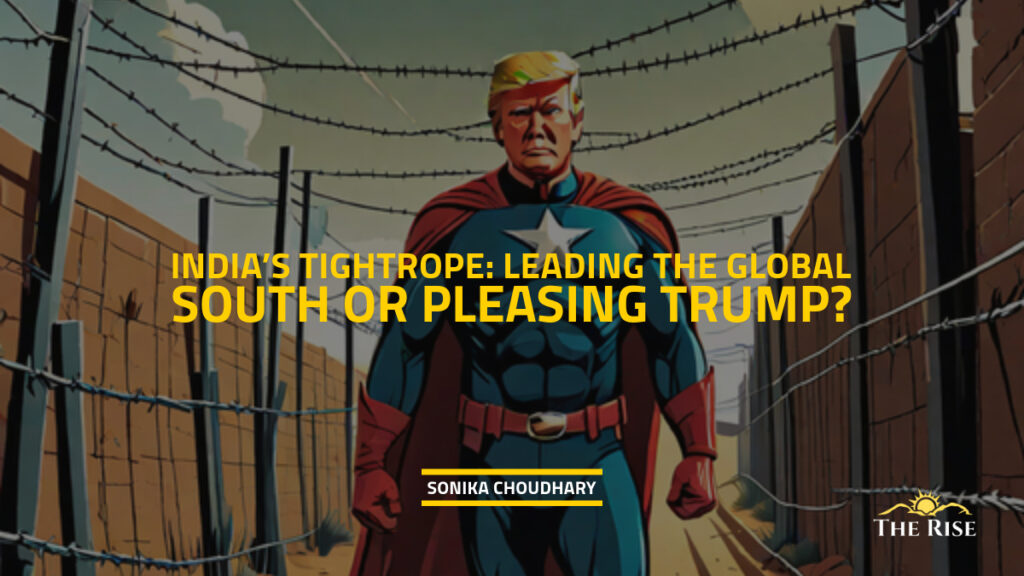



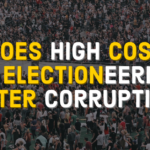






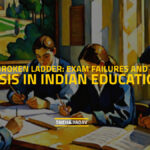
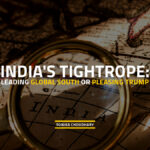
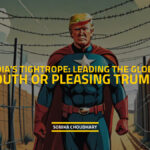

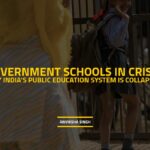











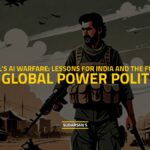






















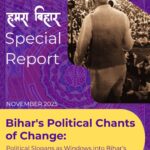











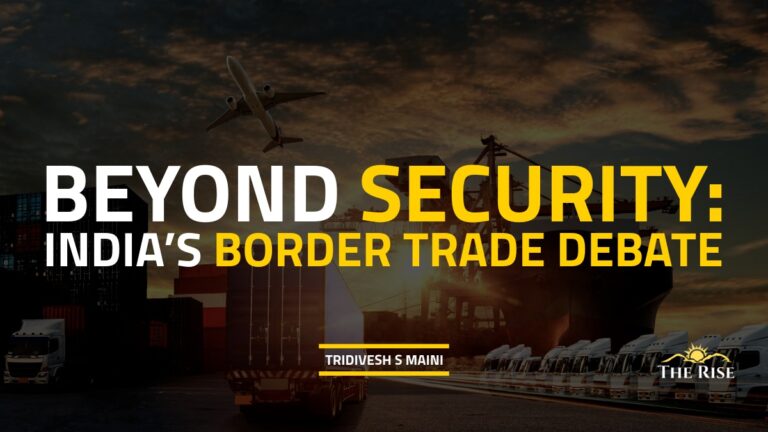
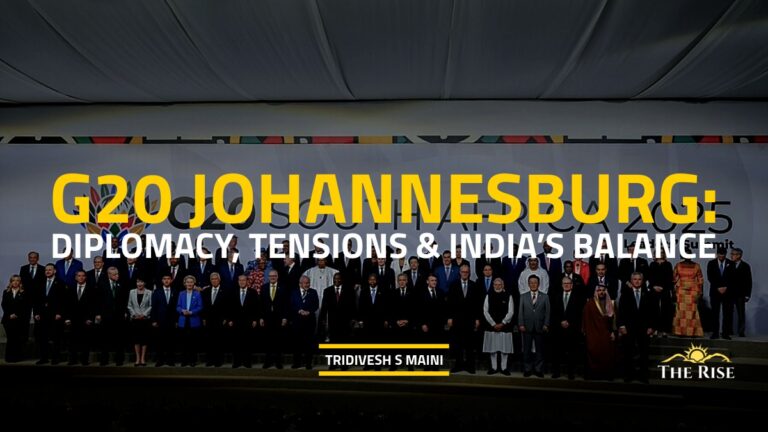

Pingback: Strategic Outreach Beyond Borders - TheRise.co.in